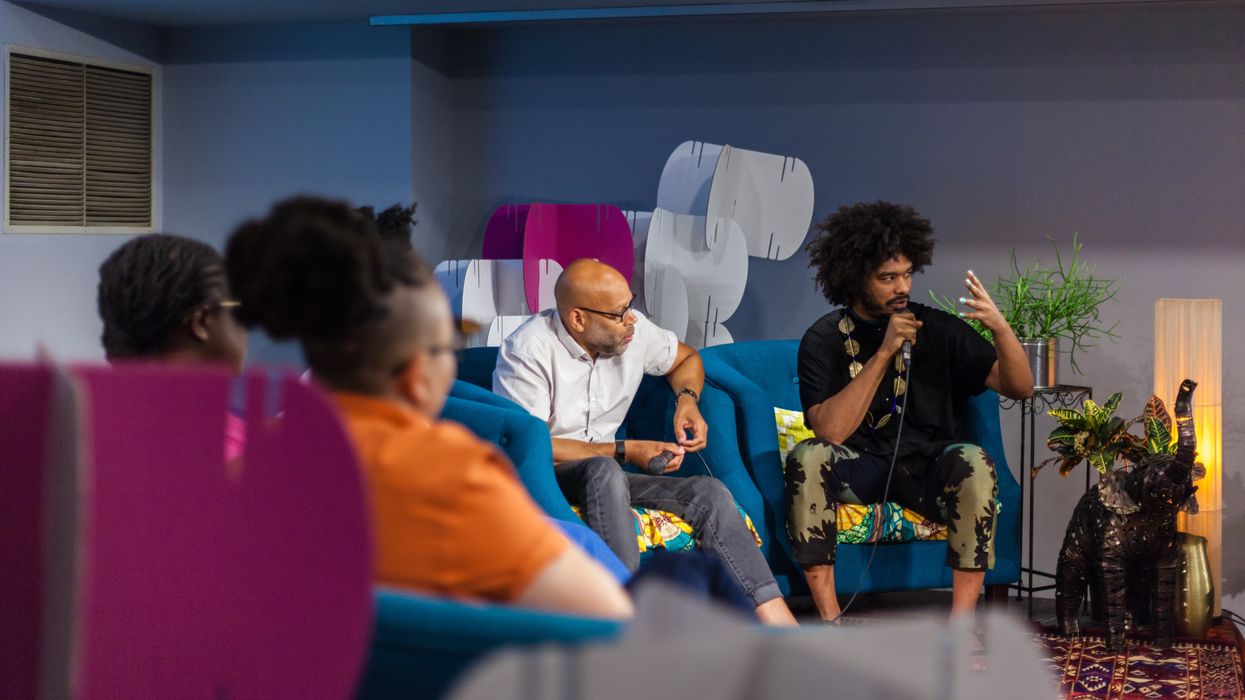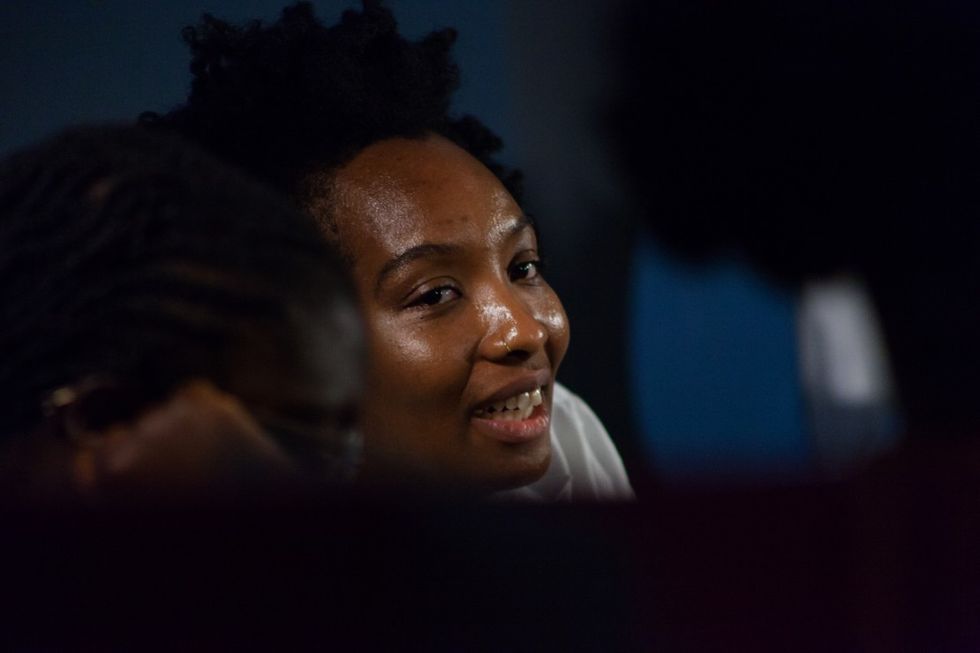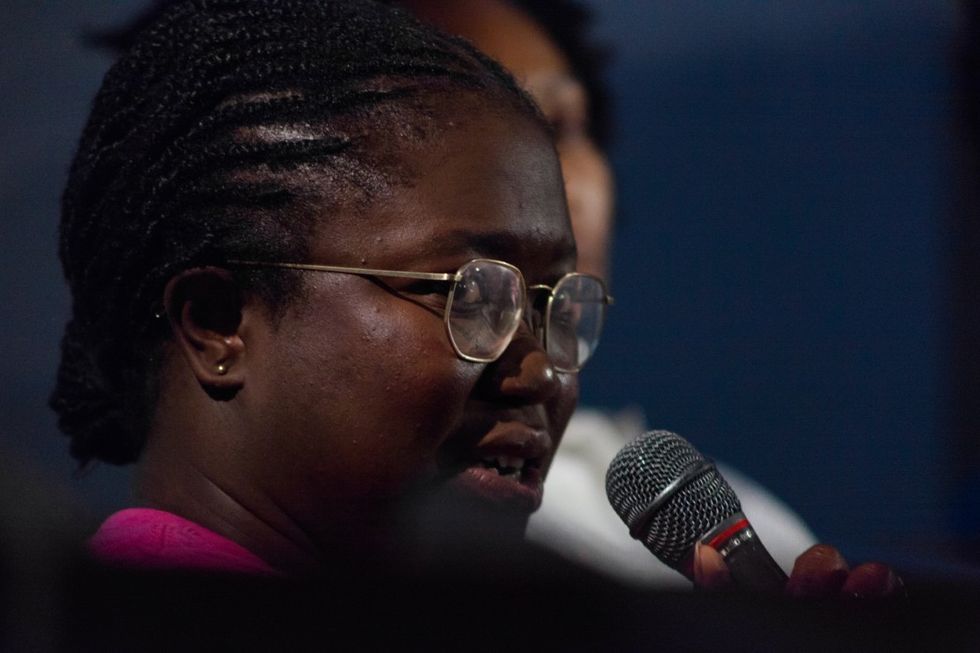How Filmmakers Choose Different Venues and Spaces For Their Work
The venue where you screen your work isn't the only thing, but it is one of the most important.

One of the great virtues of the BlackStar Film Festival's endlessly engaging program of films is that the selection committee isn't afraid of the avant-garde. There are daring movies of breathtaking formalism situated right next to romantic comedies and science fiction. The work of black avant-garde filmmakers has not been nearly as carefully documented nor examined, but there is much terrific work being done to which national outlets have not provided nearly enough coverage.
In short, there has been (and continues to be) amazing work made without the constrictions of traditional narrative. BlackStar is the only reliable place to find it.
A group of likeminded artists and curators sat down to discuss how nontraditional cinematic forms are being utlized and how different spaces and forms can help artists today. Directors Kevin Jerome Everson, Nuotama Frances Bodomo, Terence Nance, and curators Jheanelle Brown and Meg Onli got into the nitty-gritty of their processes on the Free Form panel and below is what they had to say.

Kevin Jerome Everson: I like the theatre black box, and the gallery is more interesting to me. It's up for a few months. I remember when I first went to Sundance, spent all this money, condos and shit, for four-and-a-half minutes of cinema? I like to design films for the gallery space and the subject matter is about the space. So for example, the moon is making it brighter or there's a candle. I like to think of it as an installation. I never really thought about making things for the iPhone or YouTube.
Terence Nance: I try not to let the venue overdetermine creative decisions. The first time I watched 8 1/2 was on my cell phone in 14-minute clips on the train. It was a narrow experience of what had been intended, especially sonically. I was affected by it but I knew if I'd seen it as it intended, it would have affected me greatly. It's like a test of the work, strangely. If you can reduce it, reduce it, and reduce it…It's hard not to think about it that way.
"I have this vision of myself walking through a crowd at a market and if I see someone has burned my movie and is selling it, that's when I know I'll have made it!'"
Nuotama Frances Bodomo:I think I was trained in a very traditional narrative film space. I think about it as very much "for movie theaters," especially the sound design. As an extensive film fangirl, I have no preciousness about where my film is seen. I know how much I searched for films, finding any version of a film to watch, hungrily, and that's how I like to imagine my movies eventually being seen. I have this vision of myself walking through a crowd at a market and if I see someone has burned my movie and is selling it, that's when I know I'll have made it. But I am creating it for a movie theatre.
Jheanelle Brown: For all of the screeners I get, I watch them all on my phone. I come from a film studies background and transitioned into arts and art-adjacent spaces. For me, there's this space for me, a specificity, thinking about the conventions of form but in a certain way it's like…"Fuck that," especially when we think about black work and the expansiveness of black film. On the one hand, I want to respect what filmmakers want, but most of the folks I talk to are just open to blurring boundaries.
Meg Onli: Che Gossett was writing an essay on a show at the New Museum on black portraiture. Che sent it to me and I asked "Oh, where is it in the gallery? I didn't see it." Che said "Oh, it's online" And I was like, "That sucks," that was the first thing I said. I said "that sucks" because I want black people to be in gallery spaces for what it means for us to take up space and be seen. But I went and looked at it and it was designed for a web platform.
For me to dismiss it in that way…it wasn't about the curation. it was about the fact of what happens when exhibitions are small for black people versus what happens when you travel for a show and it's this tiny little room for black people in this giant institution? What does it mean to say, "There's blackness in here." I want to think about how we occupy space. But I'm trying to approach it with more flexibility. What does it mean to purposely use space in a certain way?
"For me when I look in the viewfinder I create these things, I don't see genre I see a sense of humanity. The longer they're up there, the more humane the work is."
Brown: I appreciate that you want black people in galleries, but galleries and museums don't feel like safe spaces. There's surveillance. But online or via any sort of technological platform, we're represented there. Black people run internet culture.
Onli: Museum spaces are not made for us. I'm the first black curator ever hired at the ICA in Philadelphia. It's really, really nuts when you step back and realized how few of us there in these positions. Online, there's still surveillance. It's just hidden in a different way and packaged differently. All of these platforms are kind of flawed. I was in the rafters watching a talk and there were 350 people, mostly POC and Allies listening to people talk about film, in a space together. It made me think about what happens when people come together for a moment and create a space within architecture that is the framework of oppression. It makes me wonder if that's worth doing.

Everson: My gig is about time. I remember when I started making features, people were freaked out about spending 80 minutes with black folk they didn't know. I made this one film, Spice Bush, and I remember walking out of the theater and this one woman said, "Oh, where's the drugs and shit?" And another black woman said, "Oh, I'm glad nobody died." You have expectations.
For me, it's about time. I got two eight-hour films. For me, when I look in the viewfinder, I create these things, I don't see genre. I see a sense of humanity. The longer they're up there, the more humane the work is.
Bodomo: I'm not anti-genre but I didn't grow up watching movies the way a lot of people my age did. Using genre and pastiche is a cultural logic if you can employ it. I don't like the way it panders to monoculture and popular culture. The formal decisions should be about what stories are being told. In the work that I'm creating, it's about making a space where people aren't asking for just the facts.
"People's subjective experience of time expands and contracts all the time."
Everson: I know that people are going to come into the middle of my movies in a gallery. I hate when the sound bleeds over from other installations. Everything's so loud now, and you got fans going. Architecture never figured out sound.
Nance: I'm going to quote Willow Smith, and she said, "I know time isn't real because I can slow it down or speed it up anytime." That always spoke to me because my experience of time is so subjective, you can't describe it, even when making a film of a certain duration. You can't control how viewers sit, how they're sitting; that fluctuates. People's subjective experience of time expands and contracts all the time. Rhythm is more important to me than duration. I'm always hyper aware of establishing a rhythm in service of whatever emotional state is in play. My subjective experience of time can be similar on a level to the next person because the rhythm, the interior, has some intentionality to it.
'Combat Shock is currently available on Blu-ray from Severin Films.











